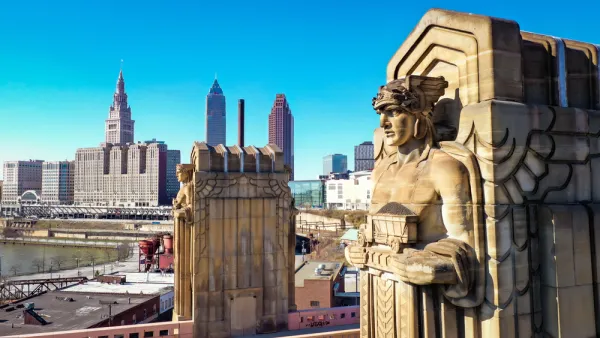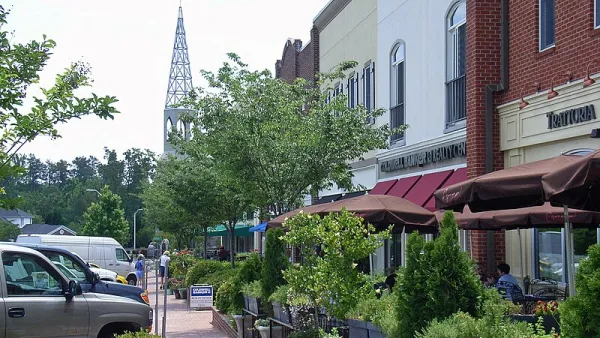In this long-form article, G.M. Donley reminds us why walkable and diverse communities have become such a planning staple. In Cleveland, New Urbanism contends with a history of sprawl and decreasing population.

Though it has marvelous advantages, G.M. Donley observes that modern technology is often guilty of "isolating individuals physically from each other: each commuter traveling in his or her own car, every home a self-contained living and entertainment center, shopping trips carried out from the desktop, social interactions mediated through a little screen."
This can be a serious impediment to diversity: "People are comfortable living among like-minded people, and communication technology and transportation networks make that easier than ever before."
Throughout the article, Donley develops the context to examine how Cleveland—and other "rust belt" cities—might factor into the walkability debate.
- Cleveland has been a historical crossroads, astride key routes of transport but still independent from major centers—and by extension their major developers and inflated real estate prices.
- Walking is what we're meant to do: "humans evolved to walk a lot and our bodies and brains function best when we do that; our past century of not walking a lot has therefore begun to have serious consequences to health and well-being."
- "Efforts are already being made to equip key Cleveland neighborhoods with the fastest fiber-optic and wireless internet capability, to set the stage for future entrepreneurship and innovation. Those initiatives will be most fruitful if conceived around the priority of creating great environments for people on foot."
FULL STORY: Walking and Thinking: Technology and the New Navigation of Everyday Space

National Parks Layoffs Will Cause Communities to Lose Billions
Thousands of essential park workers were laid off this week, just before the busy spring break season.

Retro-silient?: America’s First “Eco-burb,” The Woodlands Turns 50
A master-planned community north of Houston offers lessons on green infrastructure and resilient design, but falls short of its founder’s lofty affordability and walkability goals.

Delivering for America Plan Will Downgrade Mail Service in at Least 49.5 Percent of Zip Codes
Republican and Democrat lawmakers criticize the plan for its disproportionate negative impact on rural communities.

Test News Post 1
This is a summary

Test News Headline 46
Test for the image on the front page.

Balancing Bombs and Butterflies: How the National Guard Protects a Rare Species
The National Guard at Fort Indiantown Gap uses GIS technology and land management strategies to balance military training with conservation efforts, ensuring the survival of the rare eastern regal fritillary butterfly.
Urban Design for Planners 1: Software Tools
This six-course series explores essential urban design concepts using open source software and equips planners with the tools they need to participate fully in the urban design process.
Planning for Universal Design
Learn the tools for implementing Universal Design in planning regulations.
EMC Planning Group, Inc.
Planetizen
Planetizen
Mpact (formerly Rail~Volution)
Great Falls Development Authority, Inc.
HUDs Office of Policy Development and Research
NYU Wagner Graduate School of Public Service





























